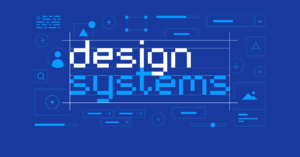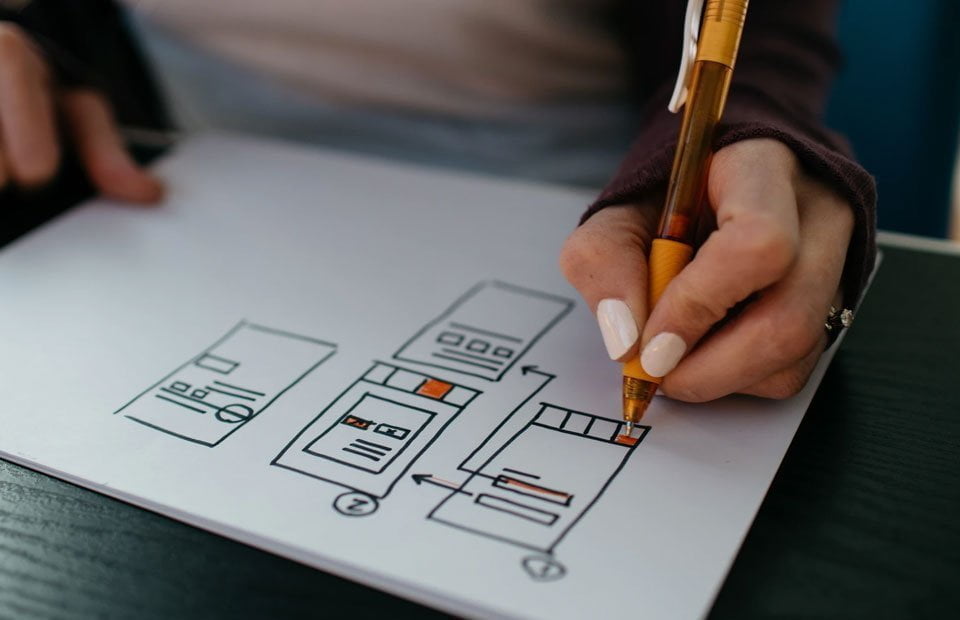Design systems have evolved as an essential tool for establishing consistent and effective workflows in the rapidly changing field of digital interfaces. These structured frameworks provide an organized method for achieving the seamless user experience and brand consistency that companies and creative teams strive to maintain.
But what is it about design systems that make them so popular, and why are they so necessary? This blog will delve into the fundamental components of such systems, their increasing popularity, and their importance in today’s constantly changing digital world.

What Is a Design System?
At its core, a design system is a complete framework made up of guidelines, structured components, and essential tools that help create a unified and cohesive user experience across different platforms and products.
It covers everything from visual elements—like colors, fonts, and spacing—to interactive components such as buttons, forms, and navigation menus.
The main goal of this system is to simplify the creative and development process, ensuring that every part of a digital product follows a consistent set of standards.
Components of a Design System
It generally contains various major components:
- Design Principles: Core guidelines that define the overarching philosophy and approach to creativity within the system.
- UI Components: Reusable components such as buttons, forms, and navigation bars that can be reused throughout multiple product domains. They are essential components of a UI design system.
- Design Tokens: Simple visual properties (e.g., colors, font sizes) used throughout the system to ensure consistency.
- Patterns: Reusable solutions for well-known design issues, including layout patterns and interaction patterns.
- Documentation: Helps designers and developers learn how to use and apply them correctly.
Why Design Systems Are Important

1. Consistency Across Platforms
One of the most significant reasons design systems are so widely used is that they provide a consistent visual look and feel for all platforms and devices. Users engage with products on smartphones, tablets, and desktops, and this system ensures a set of rules and elements that ensure everything looks and functions exactly the same way regardless of where it’s accessed. This promotes brand awareness and trust since the users experience something familiar and coherent wherever they use your product.
2. Increased Efficiency and Productivity
It greatly improves the efficiency and productivity of development and creative teams. They offer a collection of reusable components and patterns, so developers and designers don’t need to start anew on each new project. This is a time-saver and allows them to focus on harder problems.
Plus, having a well-defined framework improves collaboration by giving everyone a shared set of guidelines. This streamlined approach reduces the time spent on creative and development tasks, allowing teams to focus on solving more complex challenges and delivering higher-quality products.
3. Improved Collaboration
For a product to succeed online, teams must be able to work together. It facilitates this by providing a common set of guidelines and standards for both teams. When designers and developers use the same UX structure, they can work together better and ensure that ideas are properly translated into code. This easy communication eliminates errors and confusion and results in an easier, faster process.
4. Scalability
As businesses grow and their digital products become more complex, keeping everything consistent across various platforms and features can be challenging. It helps with this by providing a flexible framework that adapts to new needs and changes. Adding new features, releasing new products, or creating on different platforms, it keeps everything in line with the same principles. This simplifies it to handle and expand your endeavors with a unified look and feel.
5. Enhanced User Experience
The final goal of a successful design system is to deliver an exceptional user experience. It achieves this by maintaining the interface simple and uniform. It does so by keeping the interface simple and consistent. This makes the users able to navigate and interact with digital products more efficiently. When patterns and elements are consistent, it is easier for users to learn and work with the product, and that results in a more rewarding and enjoyable experience. Moreover, It addresses frequent issues and incorporates best practices so that the product not only appears beautiful but also fulfills user needs and expectations.
How to Integrate a Design System
1. Define Your Goals and Objectives
Before you start building a structured framework, it’s important to know what you want to achieve. Think about how it will support your business and creative goals, whether that’s improving consistency, boosting efficiency, or enhancing the user experience. Clear goals will guide the development process and ensure it meets your needs.
2. Create a Design System Team
Constructing an effective framework calls for contributions and assistance from numerous stakeholders. Compile a cross-functional team with members such as designers, developers, product managers, and other suitable members. They will work together to design and maintain the framework, ensuring that it suits every user and stakeholder.
3. Develop Design Principles and Guidelines
Establish a set of guiding principles that will serve as the foundation for your framework. These must embody your brand values and creative philosophy, acting as a guide for decision-making. Create comprehensive guidelines for visual elements, UI components, and interaction patterns to ensure consistency and coherence throughout your product.
4. Build and Document UI Components
Create a library of reusable UI elements that can be used across your product. These may include buttons, form controls, navigation, and other shared interface components. Each component should be documented in-depth with guidelines for usage, including when and how to utilize it, and variables related to it. This documentation will serve to allow all members of your team to effectively use and deploy the components.
5. Implement and Iterate
Once your framework is developed, begin implementing it across your product. Monitor its effectiveness and gather feedback from users and stakeholders. Continuously iterate and refine based on this feedback, making improvements and updates as needed. Regularly review and update the framework to ensure it remains relevant and effective.
Conclusion
Design systems have become a mandatory component for producing digital products that are productive and well-designed. It ensures to make things consistent, and more productive and provides a better user experience by presenting a set of consistent rules, elements, and tools.
As businesses and creative teams continue to navigate the complexities of digital design, structured approaches for startups provide a reliable method to achieve their goals and deliver exceptional products.
Whether you’re just starting to discover formal workflows or want to optimize your current system, knowing what contributes to the popularity of these systems and why they are important will enable you to make better decisions and design more effective digital experiences. Leverage the strength of well-structured methodologies and open the door to more efficient, scalable, and user-friendly solutions.





informative post
yes that is